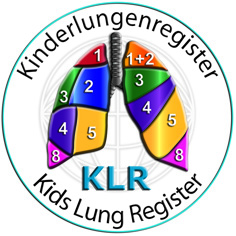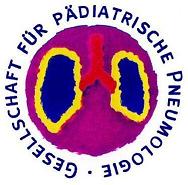All children with DPLD (= ILD) and those who have got a lung biopsy
1. All diffus parenchymatous lung diseases (DPLD), also called interstitial lung diseases, are rare and should be collected and followed long term in the register. The entities covered are listed in tab. 1.
The current classification table is here.
2. Additionally, all children with a diagnostic lung biopsy should be included.
Tab. 1 List of the diagnosis to be included in the register and biobank. Entities not yet covered in the list are also welcome.
| A1 DPLD-Diffuse developmental disorders |
| Acinar dysplasia |
| Alveolar capillary dysplasia with misalignment pulmonary veins |
| Alveloar capillary dysplasia, no misalignment of pulm.veins (+ anophthalmia, cong. heart disease, diaph. hernia, lung hypoplasia, ment. retard., others) |
| Congenital alveolar dysplasia |
| A2 DPLD-Growth abnormalities reflecting deficient alveolarisation |
| Intrauterine growth retardation (alcohol) |
| Pulmonary hypoplasia |
| Pulmonary hypoplasia associated with diagphragmatic hernia |
| Related to chromosomal disorders |
| Related to congenital heart disease |
| Related to preterm birth (BDP-cLDI) |
| Related to preterm birth (Wilson Mikity, new BPD) |
| A3 DPLD-Infant chronic tachypnoe and firm morphology |
| Chronic tachypnoe of infancy (CTI) |
| Neuroendocrine cell hyperplasia of infancy (NEHI) |
| Pulmonary interstitial glycogenosis (PIG) |
| A4 DPLD–related to alveolar surfactant region |
| ABCA3 mutations 1 |
| ABCA3 mutations 2 |
| Alveolar microlithiasis |
| Chronic pneumonitis of infancy (CPI) |
| Desquamative interstitial pneumonitis (DIP) |
| Lipoidpneumonitis, Cholesterol pneumonia |
| Nkx21 gene defect |
| Nonspecific interstitial pneumonia (NSIP) |
| NSIP+PAP+Microvasulopathie |
| Pulmonary alveolar proteinosis (PAP), adult NO GMCSF autoantibodies |
| PAP, adult with GMCSF autoantibodies |
| PAP, juvenile |
| PAP, neonatal |
| PAP, secondary to associated disease |
| PAP+DIP+cholesterin granulomas |
| Surfactant protein B mutations |
| Surfactant protein C mutations |
| Usual interstitial pneumonitis |
| Cryptogenic Organizing Pneumonia (Bronchiolitis Obliterans Organizing Pneumonia) |
| Diffuse Alveolar Damage and Acute Interstitial Pneumonia |
| Acute Fibrinous and Organizing Pneumonia |
| Respiratory Bronchiolitis-Interstitial Lung Disease |
| Ax DPLD-unclear RDS in the mature neonate |
| to be determined |
| Familial |
| No or very low SP-C biochemically |
| No SP-B biochemically |
| Pulmonary hypertension |
| Ay DPLD-unclear RDS in the almost (30-36 wks) mature neonate |
| Familial |
| No or very low SP-C biochemically |
| No SP-B biochemically |
| Pulmonary hypertension |
| B1 DPLD-related to systemic disease processes |
| Achondroplasie, zB Cartilage-Hair Hypoplasia |
| Familial dysautonomia (Chromosome 9q31 encoding ICAP) |
| Familial ILD, growth defic., hepatopathy, normal psychomotor development, triventri.hydrocephalus |
| Hermansky-Pudlak Syndrome |
| Hoyeral Hreidasson Syndrom (Dyskeratosis congenita) |
| Immune-mediated/collagen vascular disorders |
| Diffuse alveolar hemorrhage due to vasculitic disorders |
| Idiopathic pulmonary hemosiderosis |
| Antibasement Membrane Antibody Disease (Good pasture’s Syndrome) |
| Lymphangioleiomyomatosis (LAM) |
| Erdheim-Chester Disease |
| Langerhans cell histiocytosis |
| Sinus Histiocytosis with Massive Lymphadenopathy |
| Churg-Strauss Syndrome |
| Microscopic Polyangiitis |
| Necrotizing Sarcoid Granulomatosis |
| Other Rare Causes of Granulomatous Arteritis |
| Giant Cell Arteritis |
| Disseminated Visceral Giant Cell Angiitis |
| Polyarteritis Nodosa |
| Takayasu's Arteritis |
| Behcet's Syndrome |
| Blau Syndrome (polyarthritis, uveitis, papuloerythematous rash) + rarely lung. |
| Sarcoidosis |
| Storage diseases |
| Wegener Granulomatosis |
| B2 DPLD-in the presumed immune intact host, related to exposures (infectious/non-infectious) |
| Aspiration syndromes |
| Central hypoventilation syndrome (Ondine) |
| Congenital muscle disease |
| Eosinophilic pneumonitis |
| Exogen allergic alveolitis/hypersensitivity pneumonitis |
| Infectious/post-infectious processes |
| Mac-Leod-Swyer-James-Syndrom |
| Drug Reactions |
| Occupational Lung Diseases and Pneumoconioses |
| Radiation Lung Injury |
| Toxic inhalation |
| B3 DPLD-in the immunocompromised host or transplanted |
| Diffuse lung damage of unknown etiology |
| Infections–Antibody deficiencies |
| Infections–Miscellaneous |
| Infections–Phagocyte defects |
| Infections–T cell deficiencies |
| Related to therapeutic intervention |
| Related to transplantation and rejection |
| B4 DPLD-related to lung vessels structural processes |
| Arterial hypertensive vasculopathy (Primary pulmonary hypertension Chr 2q33) |
| Congestive changes related to cardiac dysfunction |
| Lymphatic disorders |
| M. Osler |
| Pulmonary capillary hemangiomatosis |
| Pulmonary hemorrhage |
| Pulmonary hemorrhage due to infection |
| Pulmonary hypertension |
| Veno-occlusive disease |
| B5 DPLD-related to reactive lypmphoid lesions |
| Follicular bronchitis/bronchiolits |
| Giant lymphnode hyperplasia (Castleman´s disease) |
| Intrapulmonary lymph nodes |
| Lymphocytic interstitial pneumonia (LIP) |
| Nodular lymphoid hyperplasia of the lung |
| Bx DPLD-unclear RDS in the NON-neonate |
| to be determined |
| Familial |










